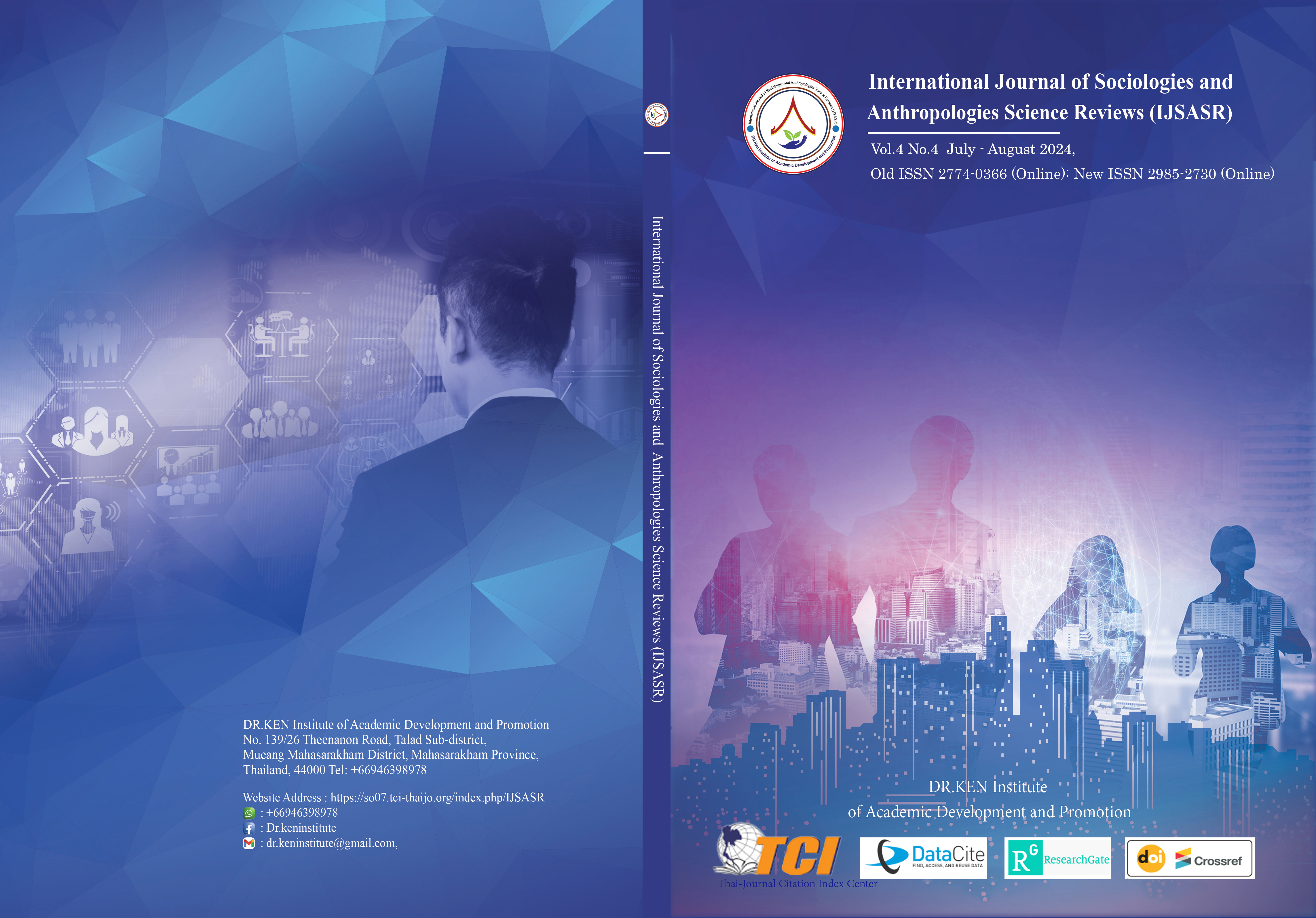Development of Quality for Aerobics Gymnastics Competition System
Main Article Content
Abstract
Background and Aim: Aerobic gymnastics is not only one of the scoring events but also one of the sports events that demonstrate difficulty and beauty in skill-oriented categories. From the scoring guidelines, the changes and continuous changes of rules, the scoring basis for aerobic gymnastics judges in the evaluation process is not an accurate numerical value, and the scores are valid within this range. Therefore, this research aims to develop quality indicators for a competitive aerobics competition system.
Materials and Methods: The survey subjects are experts engaged in the field of competitive aerobics research, 6 active aerobics event management personnel within Guangdong Province, 62 competitive aerobics coaches, and 32 competitive aerobics referees, totaling 100. The event management personnel mainly include personnel from the organizer and co-organizer, and the coaches are mainly coaches of the Guangdong Provincial University Competitive Aerobics Team. Referees include international, national, national first, national second, and national third-level referees. This research mainly uses the Delphi method to collect the original data, to build the evaluation index system of decision-making ability in the scoring process of aerobic gymnastics.
Results: Firstly, 6 primary indicators, 18 secondary indicators, and 67 tertiary indicators have been established. Among them, the tangibility and safety in the first level indicators are objective systems in the service system of competitive aerobics competitions. Secondly, the subjective system includes the responsiveness, empathy, and reliability of the quality of competitive aerobics events. The secondary indicators include the quality of competition staff, competition support, and the ability to quickly respond to the demands of participants.
Conclusion: The construction of service quality indicator system for competitive aerobics events are as follows: (1) the rules and regulations of referees, as well as the professional competence and ethics of referees; (2) the quality of competition staff, competition support, and the ability to quickly respond to the demands of participants; and (3) the public nature of the quality of competitive aerobics events.
Article Details

This work is licensed under a Creative Commons Attribution-NonCommercial-NoDerivatives 4.0 International License.
Copyright on any article in the International Journal of Sociologies and Anthropologies Science Reviews is retained by the author(s) under the under the Creative Commons Attribution-NonCommercial-NoDerivatives 4.0 International License. Permission to use text, content, images, etc. of publication. Any user to read, download, copy, distribute, print, search, or link to the full texts of articles, crawl them for indexing, pass them as data to software, or use them for any other lawful purpose. But do not use it for commercial use or with the intent to benefit any business.

References
Cao, H., & Wang, W. (2021). Longitudinal Analysis of Difficulty Changes in Aerobic Gymnastics Competition Rules. Fujian Sports Science and Technology, 12(2), 53-56.
Dong, X., Diao, Z., Jiang, T., & Li, H. (2006). Research on the Characteristics and Countermeasures of the New Rules of Aerobic Gymnastics. Journal of Beijing Sport University, 8(3), 407-408+423.
He, G. (2001). Research on the current situation and development trend of aerobic gymnastics in China. Journal of Beijing Sport University, 15(1), 135-137.
Hou, H., Li, G., Song, S., Wang, Y., & Chang, L. (2005). Cultivation System of Reserve Talents for High-performance Sport Powerful Countries Abroad and Its Enlightenment. Journal of Shanghai University of Sport, 12(4), 1-5+15.
Li, W. (2009). Analysis of the influencing factors of football referees' exercise of "discretion". Journal of Tianjin University of Sport, 21(3), 257-260.
Li, Y. (2015). Analysis of the impact of the implementation of the new rules on the group five events of aerobic gymnastics in China. [Master's Degree Thesis]. Beijing Sport University.
Luo, M. (2012). The impact of the change of aerobics competition rules in the new cycle on the performance of aerobic gymnastics competition. Master's Degree Thesis: Gannan Normal University.
Niu, Y. (2018). Research on the regional distribution of participating units in China's aerobic gymnastics events. Master's Degree Thesis: Beijing Sport University.
Sun Xiaojuan. (2012). Evolution and development trend of FIG aerobic gymnastics rules. Master's Degree Thesis. Xi'an Institute of Physical Education.
Wang, L. (2021). Analysis of the art arrangement of mixed doubles in the 2019 European Aerobic gymnastics Championship. Master's Degree Thesis: Central China Normal University.
Wang, M. (2002). Analysis of the development trend of aerobic gymnastics and the countermeasures to be taken from the change of rules. Journal of Beijing Sport University, 9(3), 416-417+419
Wang, Y. (2018). The development trend of aerobic gymnastics under the guidance of the new cycle rules (2017-2020). Master's Degree Thesis: Wuhan Sports University.
Wu, X. (2019). Research on the current situation and path optimization of the cultivation of young aerobic gymnastics reserve talents in Jinan. Master's Degree Thesis: Harbin Sport University.
Yao, M. (2011). Research on the Evolution of Aerobic Gymnastics Competition Rules. Master's Degree Thesis: Beijing Sport University.
Zhang, Z., Ma, L., Che, L., Qin, Y., & Chen, S. (2017). Research on the World Pattern and Development Trends of Aerobic Gymnastics - Based on Comparative Analysis of Results at the Aerobics World Championships. Journal of Xi'an Institute of Physical Education, 19(6), 755-761.
Zou Wei. (2011). Research on the changing trend of new and old rules of aerobic gymnastics. Master's Degree Thesis: Shanghai Jiaotong University.






